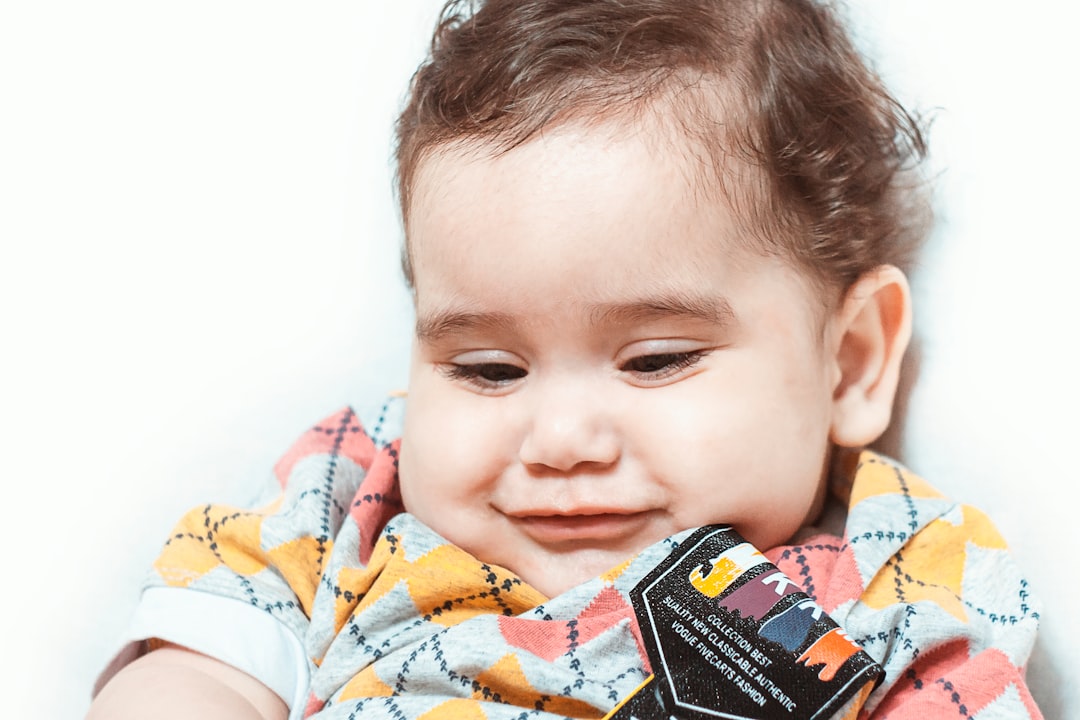

Engage prospects with a scan and streamline customer engagement with FREE QR code marketing tools by Sona – no strings attached!
Create a Free QR CodeFree consultation

No commitment

Engage prospects with a scan and streamline customer engagement with FREE QR code marketing tools by Sona – no strings attached!
Create a Free QR CodeFree consultation

No commitment
QR codes have quickly evolved from a novelty to a strategic powerhouse in connecting offline engagement with online action. For child care consulting services, QR codes offer a seamless and highly effective way to boost enrollment, streamline parent communication, and modernize center operations, no app download or complex setup required. For examples in child care, see this engagement guide. They shorten the distance between interest and action, turning every paper flyer, open house, and front desk encounter into a measurable digital touchpoint.
Child care centers face mounting challenges: improving parent engagement and regulatory compliance, optimizing enrollment strategies, and facilitating contactless check-ins without adding complexity. Many centers miss high-value prospects who encounter paper forms or information flyers but never complete a registration. Manual processes such as printed brochures, staff sign-in sheets, and paper surveys add friction and hinder data collection. Anonymous visitors remain invisible to staff, reducing the efficacy of follow-ups and personalized communication.
By integrating QR codes into consulting workflows, child care providers and consulting teams can automate feedback gathering, replace outdated practices, and significantly enhance both operations and the family experience. QR-powered approaches also allow real-time tracking of parent engagement that surfaces actionable intent signals and increases meaningful follow-ups. The strategies below show how to deploy QR codes deliberately across the family journey, what to measure, and how to translate scans into enrollments and lasting satisfaction.

QR codes create a seamless bridge between a center’s physical environment and its digital tools. When used intentionally, they accelerate enrollment, gather richer parent feedback, and support safer, more efficient day-to-day operations. Consultants can map QR codes to specific business outcomes, then roll out standardized playbooks that are easy for center staff to run and measure.
Start by identifying high-friction moments that already exist in the center: paper registration packets that get misplaced, front desk lines for manual check-in, tour sign-ups that rely on handwriting, or newsletters that require typing a long URL. Replace these analog bottlenecks with QR-powered workflows that capture data instantly and trigger automated follow-up. And yes, Sona QR is built to support every step of this transformation, from dynamic code generation and testing to analytics, CRM syncing, and multi-channel attribution.
For example, replacing manual registration packets with a QR code linking to a secure digital form can reduce incomplete applications and shorten onboarding. Parents can start on their phone during a tour and finish at home, while staff get instant alerts and can follow up quickly. When consultants centralize these steps across centers using a platform like Sona QR, they make transformation measurable, repeatable, and easy to optimize.
Child care centers rely on extensive communication and documentation, which often live in binders, clipboards, and printed packets. QR codes close the gap between those offline materials and the digital actions parents and staff need to take right away. They remove friction for families and create clarity for staff because every scan is a traceable step in the journey toward enrollment and long-term satisfaction.
In addition, QR-driven interactions reduce operational waste. Rather than repeatedly printing updated handbooks or menus, centers can place a single dynamic code at the front desk, on classroom doors, or inside parent handbooks. When policies change or events shift, the destination updates without reprinting a single page. This not only lowers costs but also improves compliance readiness because the most current information is always one scan away. For classroom-friendly ideas, see QR codes in education.
For consultants who advise multiple sites, this approach builds a cross-center view of engagement. You can compare which materials work best by age group or neighborhood, identify what drives parent confidence, and shift budgets toward the tactics that reliably increase conversions.

Different QR code formats unlock specific outcomes for child care centers. Selecting the right format ensures families get to the correct destination without confusion and that staff collect the data they need for compliance and follow-up. Most centers will rely heavily on dynamic web links and forms because they provide flexibility and analytics that evolve with the program.
In addition to families, QR codes can support staff operations, licensing checks, and vendor coordination. From onboarding checklists to emergency contact updates, QR formats can simplify complex, multi-step processes that often get lost in paperwork.
Dynamic QR codes are recommended for most use cases because they allow updates without reprinting and provide analytics that inform decision-making. Static codes are best for one-time or permanent destinations, such as a general information PDF that will not change for a long period.

Growth opportunities appear wherever curious parents meet printed information or a physical space. Think about the parent journey: discovery, tour, application, onboarding, and ongoing communication. Placing QR codes at every high-intent touchpoint captures momentum and signals intent in real time. These signals help consultants recommend enhancements quickly and show measurable ROI to center leadership.
Audit each location and asset to confirm that a parent can take the next step immediately. If a parent reads about your infant program on a poster but cannot book a tour in the moment, you have left value on the table. If a family receives a handbook but cannot submit an acknowledgement digitally, you miss the chance to track compliance reliably.
By systematically auditing and upgrading each touchpoint, consultants construct a data-rich growth engine that guides both marketing and operations. Repeatable wins across locations strengthen the case for wider adoption and consistent training.

Targeted QR applications address persistent pain points: incomplete enrollments, slow check-in queues, and low survey participation. Equip each code with a clear promise and an easy next step so families understand the value behind each scan.
Pilot three to five high-impact use cases first. Measure time savings and conversion lift, then expand to broader workflows. The examples below consistently deliver measurable improvements in enrollment velocity, parent satisfaction, and staff efficiency.
These applications turn passive information into active engagement. The result is a highly responsive, measurable consulting model where every scan triggers a step forward in the family journey.
Every scan is a signal: who is interested, where they saw your message, and what they want to do next. By deploying unique QR codes across different materials and locations, you can segment audiences automatically and tailor follow-up with precision. This approach multiplies the impact of your outreach and reduces wasted communications.
In child care consulting, meaningful distinctions include prospective families versus current families, tour attendees versus casual visitors, and age-specific interests such as infant care versus pre-K. Sona QR can pass scan data to your CRM or marketing tools so these segments drive email sequences, SMS reminders, and retargeting campaigns in real time. These efforts are powered by first-party intent data.
Segmentation ensures that each communication feels helpful, not repetitive. It also arms directors with insights about which programs are in highest demand and where to focus capacity planning.
Successful marketing blends print, in-person, and digital channels into one connected journey. QR codes act as the glue, linking offline attention to online action while feeding performance data back to a central dashboard. This enables real-time optimization, even for historically hard-to-measure channels like community posters and direct mail. For broader outreach ideas, review these child care marketing tips.
In child care consulting, high-intent interactions often happen in the real world: a family walks by your center, attends a community fair, or reads a mailed brochure at the kitchen table. QR codes capture those moments and route them to digital destinations that your team can track and improve.
Treat every scan as an entry into your marketing engine. With Sona QR, you can manage all your codes in one place, monitor performance, and sync scan data to your CRM and ad platforms for coordinated follow-up across channels.
Effective QR deployment follows a simple, repeatable process that ties each scan to a specific outcome. The steps below help child care consultants and center leaders plan, launch, and optimize campaigns that are easy for staff to run and easy for families to use.
Start small by digitizing two or three high-impact workflows such as tour booking, enrollment, and feedback collection. Validate the data pipeline and staff readiness, then expand placements and automation. Continuous measurement ensures each iteration improves both parent experience and conversion rates.
Clarify your primary goal to set scope and success criteria. For child care centers, common goals include increasing tour bookings before peak seasons, speeding up enrollment processing, or collecting real-time feedback after conferences and events. Selecting a focused use case aligns the team and simplifies measurement.
Document your baseline, such as current tour-to-enrollment conversion or average time to complete an enrollment packet. Establish a target improvement range so your team can judge the impact of the QR rollout within the first month.
Decide between static and dynamic codes. Static codes are suitable for fixed destinations that rarely change, such as a general program PDF. Dynamic codes are best for most consulting use cases because they allow destination updates, track scans, and support campaign optimization.
For multi-site consulting or seasonal programs, dynamic codes give you the flexibility to test new destinations, adjust messaging, and keep content current without reprinting. Sona QR makes it easy to manage these updates at scale and keep analytics intact.
Design for clarity. Include a short, benefit-led CTA next to the code, such as Scan to schedule your tour or Scan for today’s menu. Use sufficient contrast and white space so the code is easily scannable from a reasonable distance. Add brand colors and a logo carefully, ensuring they do not reduce readability.
Test the code on multiple devices, at different angles and distances, and under varied lighting conditions common in lobbies and classrooms. Confirm the landing page is mobile-first, loads quickly, and carries the same message and promise as the CTA. A frictionless experience after the scan is as important as the code itself.
Place codes at the exact moment a parent is most likely to take action. For example, put a tour booking code near the front door and in the lobby, enrollment codes in brochures and mailers, and a feedback code in a post-conference handout. Align code size and placement with viewing distance to ensure effortless scanning.
Match placements to your growth plan. For a new site, focus on window posters, direct mail in nearby neighborhoods, and open house signage. For a mature center, emphasize classroom bulletin boards, parent handbooks, and event signage to deepen engagement and streamline operations.
Monitor scan volume, conversion rates, and completion times in real time. Use UTM parameters and Sona QR analytics to understand which assets, rooms, and neighborhoods drive the strongest results. If parents start an application but stall on a particular step, simplify that step or add progress indicators to improve completion.
A/B test headlines, CTAs, and landing page layouts to increase scan-to-action conversion. Use CRM syncing to trigger tailored follow-up, such as sending a tour reminder to families who scanned but did not book or sharing tuition FAQs after a pricing sheet scan. Feed insights back into your playbook so future campaigns launch stronger. For measurement frameworks, see multi-touch attribution.
QR codes are only as valuable as the outcomes they produce. Tracking scans, attributing them to specific assets and locations, and connecting them to conversions is the backbone of a strong consulting program. Without this visibility, you know people scanned, but not whether they enrolled, provided feedback, or requested help.
With Sona QR and Sona, an AI-powered marketing platform that turns first-party data into revenue through automated attribution, data activation, and workflow orchestration, child care consultants can capture real-world engagement, unify it with website and CRM activity, and attribute revenue or enrollment to the right touchpoints. This turns QR usage into a performance channel with budget justification and clear impact.
The result is a closed-loop system that shows which actions drive the outcomes center leaders care about: inquiries, tours, completed applications, and satisfied families who stay and refer others.
Once your first codes are in place, consistency and clarity make all the difference. Treat QR codes as part of your center’s daily flow, not a one-time novelty. The more reliably families find QR touchpoints, the more they will use them, and the stronger your data will become.
Choose the practices that fit your physical environment, your family demographics, and your tech stack. If your audience includes grandparents or multilingual households, add short scanning instructions and language options at the destination. For automated email journeys, consider integrating QR scans with emails.
Small operational habits, such as pointing to the QR code during a tour, compound into stronger adoption, better data, and faster improvements.

QR codes are producing tangible results in child care settings because they meet families where they are: on the go, on their phones, and often juggling multiple tasks. Below are examples that illustrate both the creativity of placements and the measurable outcomes that follow.
Consider the seasonal nature of enrollment. During peak enrollment windows, a center might deploy a neighborhood poster campaign with unique QR codes by zip code. The consultant learns which areas generate more scans and applications, then reallocates outreach to those zones within days, not months.
Directors consistently report easier enrollment, smoother onboarding, and higher satisfaction when QR codes simplify key tasks. Families value immediacy and transparency; staff value streamlined processes and accurate, centralized data.
Practical details determine whether a QR program thrives or stalls. Clear promises, thoughtful placement, and ongoing measurement keep campaigns relevant and effective. Conversely, vague CTAs, poor scannability, and lack of tracking hinder results and erode confidence.
Success also depends on change management. Teachers and front desk staff should feel confident explaining why QR codes help families and how to troubleshoot common issues. A short demonstration during staff meetings goes a long way toward adoption.
When these practices are standard, QR codes become an everyday advantage that enhances parent experience and staff efficiency rather than a one-off tactic.
QR codes are more than a shortcut; they are a high-impact strategy for child care consulting services that want to digitize operations, increase parent engagement, and drive center performance. Every flyer, sign-in sheet, or announcement becomes a conversion opportunity that is trackable and actionable, even for leads that might otherwise go untracked. Consultants can demonstrate which materials and moments matter most, then scale those wins across sites with confidence.
With QR workflows, child care consultants unlock instant engagement, easier enrollment management, and a coordinated, data-rich experience across print and digital channels. The result is a faster, friendlier journey for families that puts important information and actions one scan away, while giving staff back valuable time for care and teaching.
Integrating QR codes fundamentally transforms consulting delivery and helps child care centers achieve measurable, scalable success. Pair dynamic QR codes with strong analytics and CRM integrations through Sona QR and Sona.com to connect every journey from first interest to enrollment. When every scan is captured, attributed, and acted upon, your center turns curiosity into commitment and daily operations into ongoing improvements. Start creating QR codes for free.
QR codes have revolutionized child care consulting services by transforming traditional outreach into dynamic, measurable growth opportunities. Whether it’s attracting new clients, enhancing parent engagement, or streamlining access to resources, QR codes simplify interactions and capture real-time data to optimize every touchpoint. Imagine instantly knowing which brochures or workshops resonate most with families and being able to adjust your strategy on the fly.
With Sona QR, creating dynamic, trackable QR codes is effortless. Update your campaigns without reprinting materials, monitor scan activity in real time, and connect every interaction directly to client acquisition and retention metrics. No more guesswork—just actionable insights that drive meaningful growth in your consulting practice.
Start for free with Sona QR today and turn every scan into a valuable connection, a trusted relationship, and a thriving child care consulting business.
Child care consulting services use QR codes to digitize workflows, automate feedback gathering, streamline check-ins, and enable real-time tracking of parent engagement, which together enhance operational efficiency and the family experience.
QR codes enable secure, contactless check-in and check-out by allowing families to scan codes at entrances, speeding up lines, creating audit-ready attendance records, and integrating with billing systems without adding complexity.
Consultants deploy QR codes at high-intent touchpoints like tours and open houses to link families directly to digital enrollment forms, enabling save-and-resume applications and timely follow-up that significantly boost enrollment conversion rates.
Using QR codes on materials such as newsletters, classroom boards, and event signage allows parents to access real-time menus, activity schedules, feedback surveys, virtual tours, and policy updates, creating active and measurable engagement.
Consultants integrate QR codes linked to mobile-first feedback and incident reporting forms that collect real-time satisfaction data, route issues automatically, and analyze trends across classrooms to guide continuous quality improvements.
Use Sona QR's trackable codes to improve customer acquisition and engagement today.
Create Your FREE Trackable QR Code in SecondsJoin results-focused teams combining Sona Platform automation with advanced Google Ads strategies to scale lead generation

Connect your existing CRM

Free Account Enrichment

No setup fees
No commitment required

Free consultation

Get a custom Google Ads roadmap for your business






Launch campaigns that generate qualified leads in 30 days or less.
